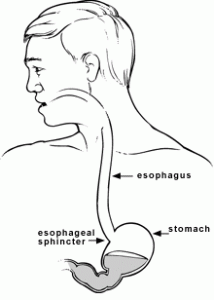
Now Scheduling Primary Care Appointments Online. Book Now.
Gastroenterology
acid reflux
The Problem
The medical term for the condition you have been experiencing is gastroesophageal reflux. Put simply, it means that acid produced by your stomach to help digest the food you eat is flowing backward, or refluxing, into your esophagus. Your esophagus is a tube about 10 inches long and one inch wide that leads from the back of your throat to your stomach. Acid washing back into your esophagus may cause irritation and heartburn.
The Cause
At the base of your esophagus, between it and your stomach, is a muscular valve, or sphincter. This sphincter (lower esophageal Sphincter or LES) opens to let food into your stomach. Normally, it will not allow the contents of the stomach to back up into the esophagus. Sometimes, however, it doesn’t work properly or is overwhelmed for any number of reasons such as:
- Transient LES relaxations
- Loss of LES resting tone
- Straining, causing increased intra-abdominal pressure
- Pregnancy
- Other medical conditions
Common Symptoms
- Frequent Heartburn
- Regurgitation (sour or bitter taste in the mouth)
- Difficulty in swallowing
Management and symptom control
Changes in diet
- Reduce the meal size, if you have symptoms after eating.
- Avoid fatty foods if they provoke symptoms.
- Avoid caffeine-containing beverages (coffee, tea and colas), if they provoke symptoms.
- Avoid alcohol, spicy foods and chocolate if they provoke symptoms.
Changes in lifestyle
- Smoking may worsen your symptoms. Try to stop smoking or cut down on the number of
cigarettes you smoke. - Extra pounds may add to the problem.Try to keep your weight down.
- If you have symptoms when you lie down, raise the head of your bed with 6 inch blocks.
- Avoid wearing tight belts or tight fitting clothing
- Avoid eating for two-three hours before going to sleep.

